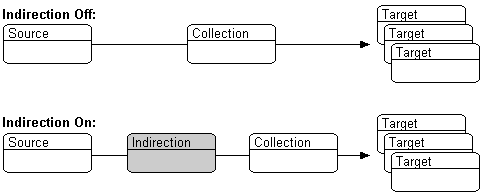
Using indirection objects can improve the performance of TopLink object relationships. An indirection object takes the place of an application object so that the application object is not read from the database until it is needed (as shown in Figure 5-4).
Figure 5-4 TopLink indirection

Without indirection, when TopLink retrieves a persistent object, it also retrieves all the objects referenced by that object. This can result in lower performance for some applications. Using indirection allows TopLink to create "stand-ins" for related objects, resulting in significant performance improvements, especially when the application is interested only in the contents of the retrieved object rather than the objects to which it is related.
Copyright © 1997, 2004, Oracle. All rights reserved.